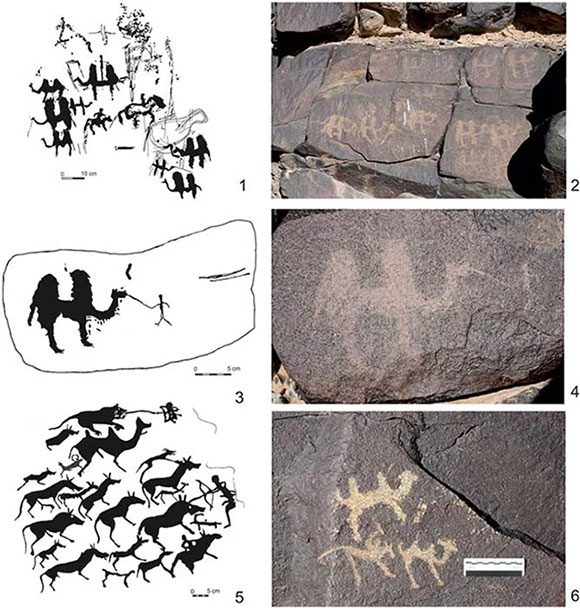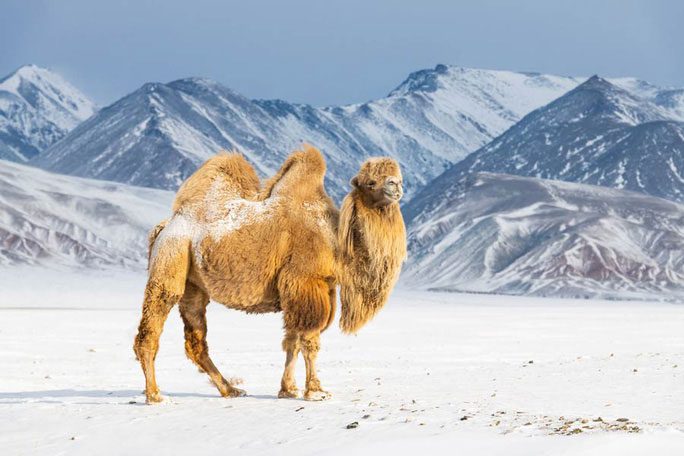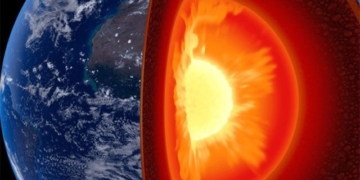Ancient paintings dating back tens of thousands of years on rock surfaces in the Gobi Desert (Mongolia) have led to the discovery of a world filled with enormous camel-like creatures that coexisted with two ancient human species.
A recently published study in Frontiers in Earth Science introduces Camelus knoblochi, an extinct camel species that could be terrifyingly large by modern standards: standing up to 3 meters tall and weighing 1 ton.
Mongolia holds the secrets to their mysterious “disappearance” 27,000 years ago.

Ancient paintings depicting an unusually large creature that prehistoric humans hunted – Photo: Frontiers in Earth Science
This gigantic beast existed alongside two ancient human species that once dominated this harsh land: Neanderthals and Denisovans, both of which belong to the genus Homo, just like modern humans, Homo sapiens, and are known for their skilled hunting abilities.
According to Ancient Origins, the research team led by Dr. John W. Olsen, Executive Director of the Je Tsongkhapa Foundation for Central and Inner Asian Archaeology at the University of Arizona in Tucson, followed clues from cave paintings created by prehistoric humans in Mongolia, which depict a camel-like creature with two humps but of unusual size. Some paintings show small humans attempting to battle this “monster.”
The researchers searched for and analyzed five leg and foot bones of Camelus knoblochi, collected from Tsagaan Agui Cave in Mongolia in 2021, alongside bones from wolves, cave hyenas, Mongolian hyenas, rhinoceroses, horses, wild donkeys, and wild sheep.
The analysis revealed that these were large but rather clumsy animals, living in grasslands, mountainous regions, and lowlands rather than just in deserts like their smaller modern relative, the Bactrian camel.

If still alive, this giant camel would be an oversized version of the Bactrian camel in the picture – (Photo: ilyaska / Adobe Stock)
It seems that the extinction of Camelus knoblochi was due to its poor adaptation to the desert ecosystem and landscape, combined with the harsh climate changes that occurred 27,000 years ago.
Additionally, human hunting may have accelerated the extinction of this giant camel, as there is no evidence that Neanderthals and Denisovans domesticated them, but there are traces indicating they hunted them for food.
However, since these two species went extinct around 30,000-40,000 years ago, it is possible that the giant camel, Camelus knoblochi, lived a little longer, but ultimately, nature took care of the last remaining individuals.


















































